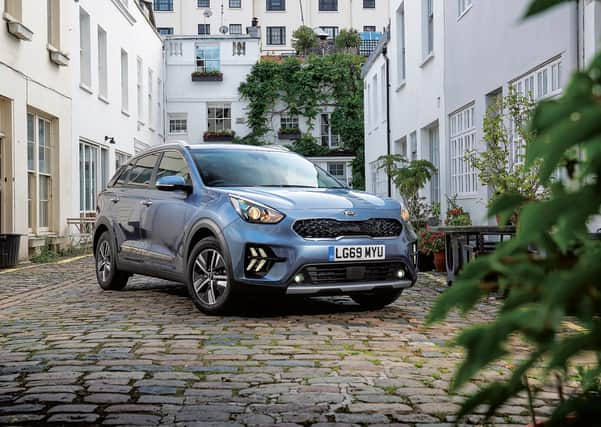Kia Niro Hybrid


Now, like almost every other carmaker, its sales are slashed by the impact of the Covid-19 virus. The year started badly for Kia anyway, with a year-on-year slide of some 2,000 registrations in January, and a slighter fall in February. In late March the government banned car sales, though dealers can take orders for the future. By 31 March, Kia’s first-quarter deliveries were down 25 per cent, year on year. The total market is down 31 per cent, at 483,557, compared with 701,036 last first quarter. New car sales fell 34pc. (Source SMMT)
In the Covid-19 crisis Kia has kept open some 40 workshops for essential-only service for key workers. Customer service plans to comply with the warranty have been put on hold. See www.kia.com/uk for useful guidance and DIY information and its RAC-backed roadside assistance.
Advertisement
Hide AdAdvertisement
Hide AdCar launches, shows, races and media test loans have halted, making life harder for the industry PR machine, and the commentators who rely on its interpretation for a living. The industry is filling our in-boxes with stories – histories of the marque, technological developments, advances in hydrogen power, future models we’ll be able to buy, games to play, how to clean your vehicle and so on.
Vanmonster devised a test of badge knowledge. Kia is not in the list but it launched in the UK in 1991 with a stylised smoking factory chimney badge, spelling Kia, on the Pride. From smoky beginnings, etc.
I have colleagues in the world of car critiques who buy Kias, or recommend them when readers ask advice. They have a good reputation and while no longer in the bargain basement they are value for your money.
Both Kia and its parent, Hyundai, give tempting warranties which are longer than the normal three years. Others, like Toyota and Vauxhall, have followed. For the private buyer a long warranty is an attraction and with a Kia you get seven years, to a maximum of 100,000 miles.
The South Korean sister companies share technology and some factories – a smaller version of the Volkswagen and PSA groups. They have been at the front in offering electric, hybrid and plug-in hybrid models. Kia has just launched the fully electric version of its latest enlarged Soul, a boxy five-door with a range of up to 260 miles and costing £33,795 including a government grant for the fully-fledged launch edition.
This week we are looking at the Niro, a roomy five-door which is large enough for some very large people I know. It is not bad on the eye and several inches longer than the Soul. It was bespokely designed for electric motoring. There is a fully electric e-Niro with a near 300-mile range from £34,495, a plug-in petrol hybrid from £30,265 and, tested here and my choice for private use, a self-charging petrol hybrid from £24,855.
Kias are now so familiar that you can find two or more in convoy. One day in town I saw two Niro hybrids, a Picanto, a Soul and a Sportage in the space of 100 yards. They are easy to identify, carrying a grinning face – what Kia calls the tiger grille. Styling has been led by some of the best in the business.
The Niro arrived in 2017. It is about the same size as a Ford Focus and buying decisions vis à vis the Ford and others must include that warranty and its choice of full or partial electric power. Kia has a large factory in Slovakia for the Ceed but our Niro comes from South Korea. I liked it.
Advertisement
Hide AdAdvertisement
Hide AdIt is a practical and easy-going car, reliably giving between 40 and 50 miles a gallon on a combination of battery and the 1.6 petrol with direct injection and a trick Atkinson firing cycle, managed through a six-speed double-clutch automatic gearbox. On a light pedal and flat roads it can teeter along on electric power but normally you are getting a mix of battery and engine.
Interior planning is smart. There is a strong loading platform in the boot. It has a three-part fold which allows practical access to storage underneath. Here there is a waterproof tray of compartments. Under that is the puncture repair paraphernalia but a spare wheel could be carried instead of the tray.
The test car was in top-flight 4 grade, for £29,270. One wants for nothing, from a heated steering wheel to automatic headlights. The shallow Michelin sports tyres may have contributed to the hard ride.